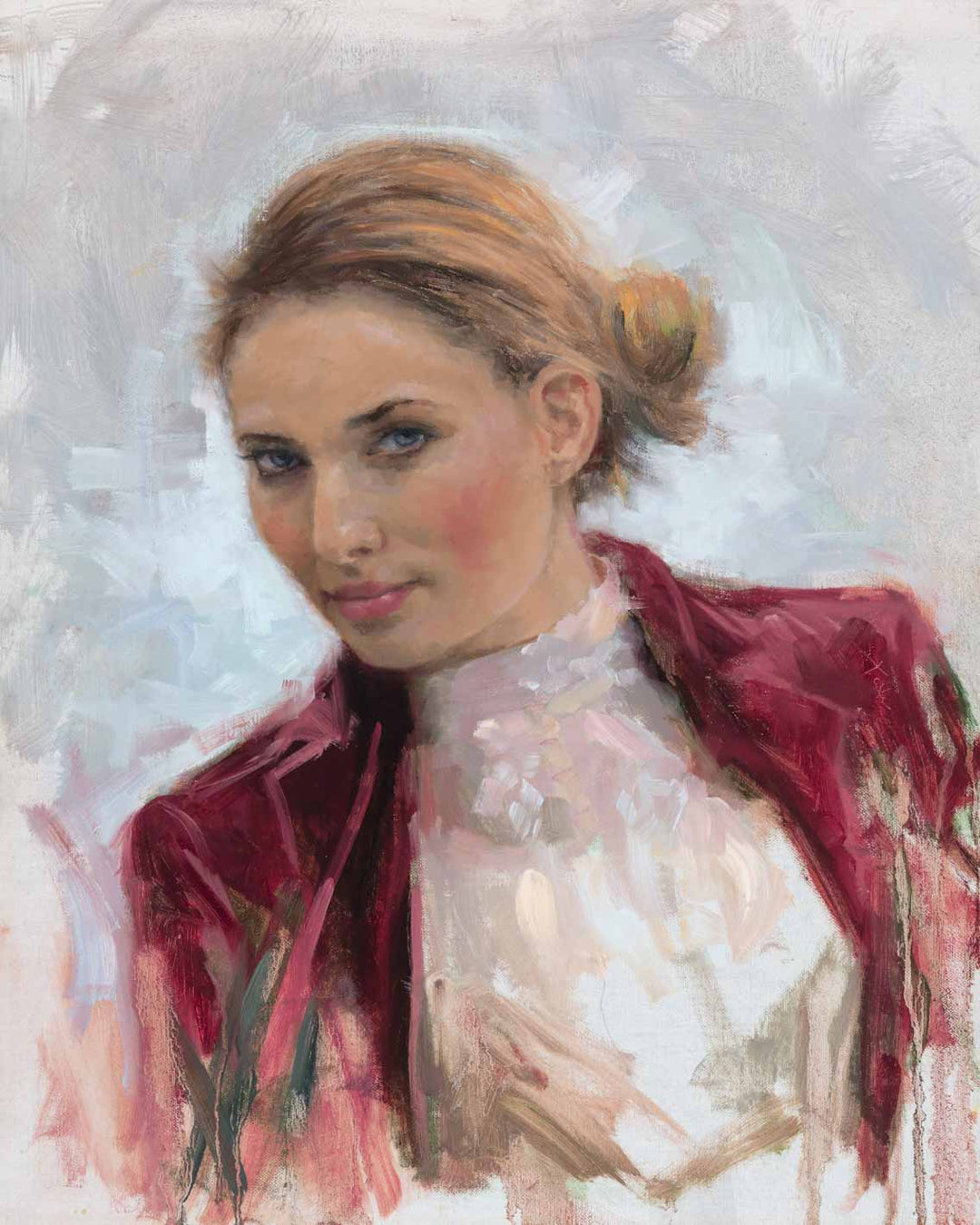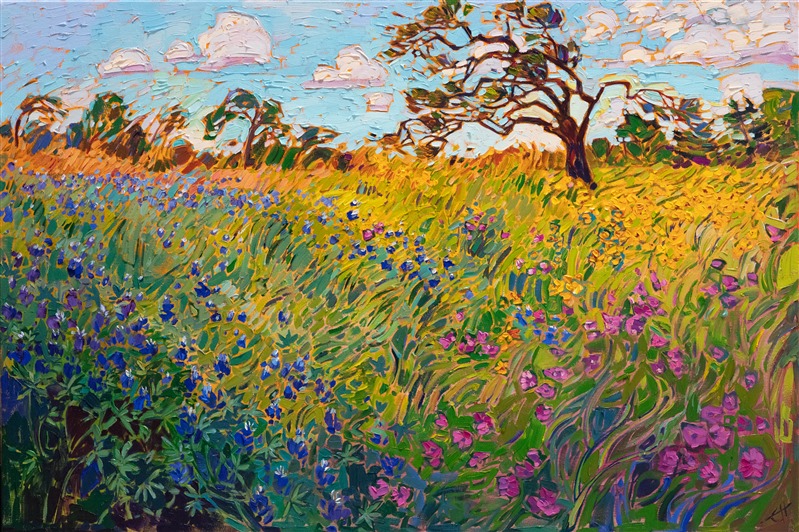Gallery-Inspired Interior Pieces: Oil Paintings for Sale
Wiki Article
Exploring Everything About Oil Paintings: An Overview to Recognizing Their Elegance and Worth
Oil paints have captivated audiences for centuries, offering a glance right into the creative mastery of various periods. Their rich background is linked with ingenious techniques and profound psychological expression. Understanding the products and techniques behind these artworks can enhance gratitude. Additionally, the marketplace for oil paints presents opportunities for financiers and collection agencies alike. As one explores this fascinating world, the inquiry occurs: what makes an oil painting genuinely beneficial?The Background of Oil Painting: A Trip With Time
Oil painting has origins that date back to ancient times, it genuinely flourished throughout the Renaissance, when artists found its versatility and abundant color capacity. Early examples can be traced to the 7th century, with techniques evolving notably throughout cultures. The tool became famous in Northern Europe in the 15th century, specifically via the works of musicians like Jan van Eyck, who originated its usage for thorough realistic look and vibrant colors. This duration noted a separation from tempera paints, enabling greater deepness and appearance. As oil painting spread, it influenced many musicians, resulting in masterpieces by prominent figures such as Leonardo da Vinci and Rembrandt. The medium's tradition proceeds, forming the art world well into contemporary times.Recognizing Oil Paints: Products and Techniques
As musicians discover the world of oil paints, they experience a diverse variety of products and strategies that specify this medium. The main parts of oil paint include pigments, which offer color, and drying out oils, such as linseed, that bind the pigments and help with application. Different ingredients can customize the paint's appearance and drying out time, boosting flexibility. Methods like glazing, where clear layers are constructed up, and impasto, which involves using thick paint, permit different visual effects. Additionally, using brushes, palette knives, and even fingers can produce unique textures and finishes. Understanding these materials and techniques allows musicians to fully reveal their creativity and achieve the desired impact in their art work.The Duty of Shade in Oil Paints
Shade plays a crucial duty in oil paints, influencing both aesthetic charm and emotional resonance. Understanding shade theory basics, consisting of the relationships in between hues, can boost an artist's ability to share mood and ambience. Furthermore, mastering shade mixing methods enables for better depth and splendor in a painting's scheme.

Shade Theory Basics
Understanding color theory is essential for artists collaborating with oil paints, as it develops the foundation for producing unified and aesthetically appealing make-ups. Color concept includes the research of exactly how colors connect, the color wheel, and the relationships between primary, second, and tertiary colors. Musicians use complementary shades to improve contrasts and create prime focus, while analogous shades promote unity and cohesiveness within a piece. Furthermore, the concepts of trendy and cozy colors influence the perception of deepness and space in a painting. Comprehending these principles enables artists to adjust color successfully, guiding the customer's eye and interacting their desired message. Mastery of color concept eventually improves a musician's ability to communicate feelings and ideas with their work.
Emotional Influence of Color
The emotional impact of color in oil paints plays an important duty in how customers regard and link with artwork. Colors stimulate specific sensations and moods, affecting the customer's emotion. Cozy shades like reds and oranges can produce a feeling of heat and power, while great tones such as blues and eco-friendlies often stimulate calmness or self-questioning. Artists tactically select color combinations to improve narrative aspects, assisting the audience's emotional trip. The saturation and comparison of shades better intensify these results, attracting focus and creating emphasis. Eventually, the interaction of shades in oil paintings not only boosts their visual charm however likewise acts as a powerful medium for emotional expression, enriching the viewer's experience and analysis.Shade Combining Techniques
While lots of elements of oil painting add to the overall composition, grasping color mixing methods is essential for achieving desired results and depth. Shade mixing can be approached through various techniques, including the additive and subtractive processes. Additive blending includes incorporating shades of light, while subtractive mixing depends on pigments, where shades blend to create brand-new shades. Musicians usually use a limited scheme to produce harmonious jobs, recognizing the connections between key, secondary, and tertiary colors. Techniques such as glazing and scumbling additionally enhance deepness and brightness. By skillfully blending colors, a musician can evoke emotions, create centerpieces, and accomplish a sense of realistic look, ultimately boosting the painting's psychological and aesthetic effect.Famous Oil Painters and Their Iconic Functions

Famed for their mastery of shade and strategy, oil painters have produced several of one of the most renowned art work in history. Distinguished musicians like Vincent van Gogh captivated audiences with his stirring brushwork in "Starry Evening," while Claude Monet's "Impression, Daybreak" laid the foundation for Impressionism. Leonardo da Vinci's "Mona Lisa" remains an enduring symbol of imaginative genius, showcasing his skill in catching human expression. On the other hand, Rembrandt's "The Evening Watch" highlights his innovative use light and darkness. Other notable figures include Pablo Picasso, that transformed contemporary art with his vibrant experimentation in jobs like "Les Demoiselles d'Avignon," and Georgia O'Keeffe, whose vibrant representations of blossoms and landscapes aided specify American modernism. Each artist's distinct style contributed substantially to the oil paint landscape.
Just how to Evaluate the Quality of an Oil Painting
Examining the quality of an oil paint involves a mindful analysis of workmanship techniques, in addition to an evaluation of color and composition. Observing brushwork, layering, and the application of paint can disclose the artist's skill degree. Additionally, the interaction of colors and the overall setup of elements add significantly to the painting's visual value.Analyzing Craftsmanship Strategies
A thorough evaluation of workmanship methods is important for figuring out the high quality of an oil painting. Evaluators should first examine the application of paint; thick, distinctive brushstrokes might suggest an experienced hand, while extremely uniform applications might indicate an absence of deepness. oil paintings for sale. The layering technique is additionally vital; the visibility of lusters and differed thickness can boost luminosity and intricacy. Additionally, the high quality of the materials utilized, such as the canvas and pigments, plays a significant function in resilience and overall aesthetic. Attention to information in elements like edges and changes in between colors mirrors the artist's commitment to their craft. Inevitably, these techniques contribute to the painting's psychological influence and market value, serving as indications of the artist's ability and intentAnalyzing Shade and Structure
While assessing the high quality of an oil paint, one must concentrate on the interaction of color and composition, as these elements are fundamental to the art work's overall impact. Color options can stimulate feelings and develop state of mind; as a result, the musician's palette must be analyzed for consistency and comparison. A well-balanced composition directs the audience's eye and produces a sense of unity. Artists typically utilize methods like the guideline of thirds or leading lines to improve visual rate of interest. Furthermore, making use of light and shadow can add depth, boosting the three-dimensionality of the paint. Inevitably, an effective oil paint marries color and structure, involving the viewer and inviting a deeper gratitude of the musician's vision and strategy.Caring for and Preserving Oil Paintings
Proper care and preservation of oil paints is essential for maintaining their integrity and durability. To secure these art work, it is essential to show them away from direct sunlight, which can trigger fading and discoloration. Preserving a steady setting with regulated temperature and humidity additional help in preventing damage. Cleaning up must be done carefully utilizing a soft, completely dry towel, avoiding any kind of harsh chemicals that might hurt the paint or varnish. Normal assessments for indications of wear and tear, such as flaking or splitting, are recommended. When storing or moving oil paintings, correct cushioning and framework are required to stay clear of physical damage. Inevitably, persistent treatment adds to the aesthetic appeal and value of oil paints over time.The Market for Oil Paints: Investing and accumulating
Comprehending the market characteristics for oil paintings is necessary for investors and collection agencies alike. The value of these artworks is affected by various variables, including the artist's online reputation, historical importance, and existing trends. Collection agencies often seek pieces that reverberate directly while considering prospective admiration in value. Galleries and public auctions act as primary locations for acquiring and selling, with prices changing based upon demand and rarity. Purchasing oil paints needs research right into the market, in addition to an understanding of credibility and provenance. Furthermore, arising musicians may supply opportunities for significant returns, while established names can command high prices. Overall, a calculated strategy to accumulating can generate both visual satisfaction and economic incentives.
Often Asked Concerns
What Are the Environmental Influences of Oil Paint Materials?
The ecological impacts of oil paint materials consist of the release of unstable organic substances (VOCs), damaging waste generation, and source extraction for pigments. These factors add to pollution and eco-friendly degradation, increasing concerns amongst eco aware musicians and customers.Just How Do Various Canvases Influence Oil Paint Outcomes?
Various canvases affect oil paint results substantially. Surface, appearance, and absorbency top quality can change paint application, drying out times, and color vibrancy. Artists frequently choose specific canvases to attain wanted results and improve their creative expression.Can Oil Paintings Be Brought Back if Damaged?
If harmed, Oil paints can indeed be brought back. Specialist conservators use various techniques to fix tears, clean surfaces, and address staining, making certain that the artwork retains its initial appeal and value for future generations.What Are the Signs of an Initial Oil Painting?
The indicators of an original oil painting include visible brush strokes, structure variations, and an unequal canvas weave (oil paintings for sale). Furthermore, credibility might be verified with provenance, signatures, and the visibility of a varnish layer distinct get more info to oil mediumsExactly How Has Innovation Influenced Modern Oil Painting Techniques?
Technology has actually significantly influenced modern-day oil painting strategies by introducing electronic tools for preparation, enhanced products for texture and long life, and online systems for marketing and sharing art, consequently expanding artists' innovative possibilities and audience get to. Oil painting has origins that date back to old times, it genuinely thrived throughout the Renaissance, when artists uncovered its flexibility and abundant color possibility. The psychological influence of shade in oil paintings plays a crucial role in just how customers view and connect with art work. While several aspects of oil painting add to the total composition, understanding color mixing strategies is important for attaining desired impacts and depth. Examining the top quality of an oil painting involves a cautious evaluation of workmanship techniques, as well as an analysis of shade and make-up. While assessing the top quality of an oil paint, one should concentrate on the interaction of color and make-up, as these elements are basic to the artwork's overall impact.Report this wiki page